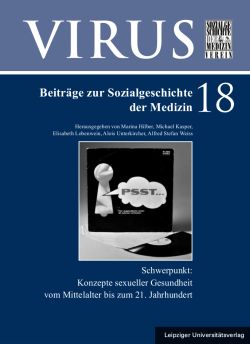
VIRUS Band 18, pp. 351-359, 2020/07/09
Konzepte sexueller Gesundheit vom Mittelalter bis zum 21. Jahrhundert

The still rather young history of pain is more and more critical about the finalist historiography postulating an increasing secularization and medicalisation of pain in the modern era. In the nineteenth century, so the narrative goes, pain lost its status as a ‘gift’ of God, turned into something that needed to be avoided and became more and more controlled thanks to medical progress as e.g. the invention of anaesthetics. Against such a backdrop, numerous religious practices of nineteenth-century Catholicism appear like anachronistic remnants of medieval, pain-idealising traditions and cults like Christ´s passion, at odds with secular and medical perspectives. This narrative of contrast does not adequately capture the history of Catholic views on pain. Whilst there was a relatively small elite group that did indeed cultivate this idealization of passion, other Catholic initiatives, like charity organisations, hospitals and religious orders focusing on health care, engaged in activities that aimed to relieve the suffering of their fellows. The research project described here addresses settings and cases where both the positive and the negative view on pain existed at the same time.
Keywords: History of Pain, catholicism, patients, passions, stigmatics, 19th century, Austria